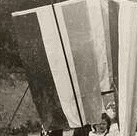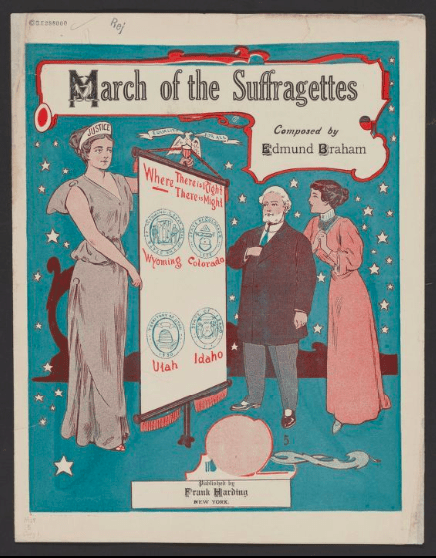On this day 100 years ago, women in the United States would have just earned the right to vote a mere ten days prior. The Suffrage Movement spanned decades, and most of the original suffragists who began their campaign in the mid 1800s would not live to see their efforts come to fruition in 1920. In order to push forward the 19th amendment after decades of struggle, members of the Suffrage Movement had to employ many political tactics to achieve their goal.
“Kaiser Wilson”


This image is from 1917, just three years after the end of the first World War. During the war, the United States under President Wilson fought against Germany in the name of freedom. Suffragists began calling President Wilson “Kaiser” to point out the hypocrisy in his support of freedom abroad before granting his female citizens full freedom at home. The word “Kaiser” would have had a deeply un-American connotation to the public at this time, and the suffragists intentionally made these comparisons to make their argument that not guaranteeing women the right to vote went against America’s democratic ideals.
The NWP


This flag was the symbol of the National Woman’s Party. If the image was in color, one would see the flag in purple, white, and yellow – the colors of the Suffrage Movement. The NWP was the last major suffrage organization to be formed, just four years prior to the passing of the nineteenth amendment. They used visual demonstrations like their flag, a “ratification banner” on which they sewed a star for every state that had already granted woman suffrage, and a variety of protests and parades to draw attention to their cause.
Peer Pressure


While women’s right to vote was not granted on a national scale until 1920, many states passed their own suffrage amendments prior to that. The four states represented above were some of the earliest states to grant the right to vote to women in the late 1800s. Suffragists often pointed to the states that had already passed suffrage amendments as examples and the more states that passed their own, the more the pressure increased for a constitutional amendment to be passed.


Timely idea for post – both for the anniversary of suffrage and the importance of voting today in an era where that right is being stolen back via voter suppression efforts.
Calling Wilson “Kaiser” was quite an insult in that era. Everything German was suddenly suspect and immigrants from the enemy countries were all suspect. That helped fuel the immigration restricts of the 1920s. I used to teach in a little village called South New Berlin. The first day I pronounced it like the German capital. I was corrected and told that since WWI it was pronounce BURR-lin.
Interesting that the western states approved suffrage so eagerly. Clearly women on the frontier played a bigger role in the society.
Like all the girls in matching white outfits. So different than our protests today.
Thanks for sharing! Really interesting to see those four states being used to show states that had already passed the right to vote for women, meanwhile today the equal rights amendment has still been stuck since the 70s.
Using the term Kaiser would have been powerful at the time during WWI, and I imagine that it could have been a point of real contention for people on both sides of the debate.
Hi Nicolas,
I also find it interesting how many states gave women the right to vote prior to 1920 – I was quite surprised the first time I learned that. Good point about the ERA, actually in the past few of years a couple more states decided to ratify the amendment. I believe now they only need one more state to ratify, although if that happens there is really no precedent for if an amendment is still eligible 50 years after it was introduced for ratification. It will certainly be fascinating to follow the ERA as it continues to unfold though.